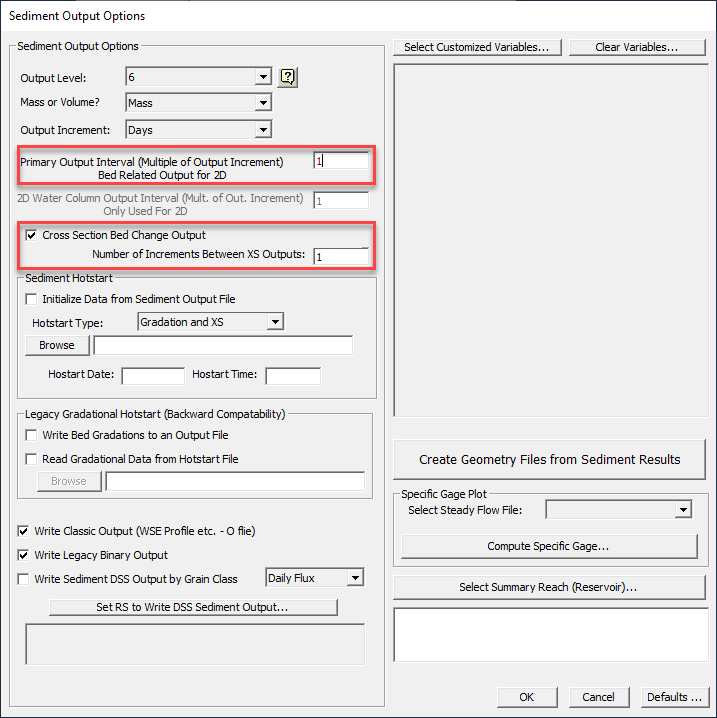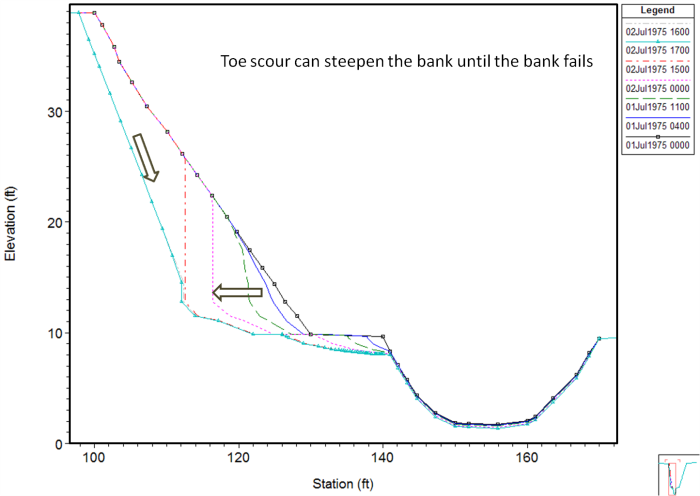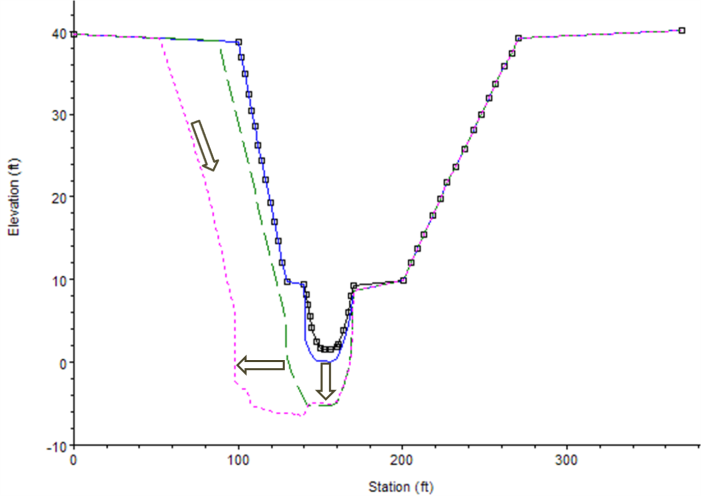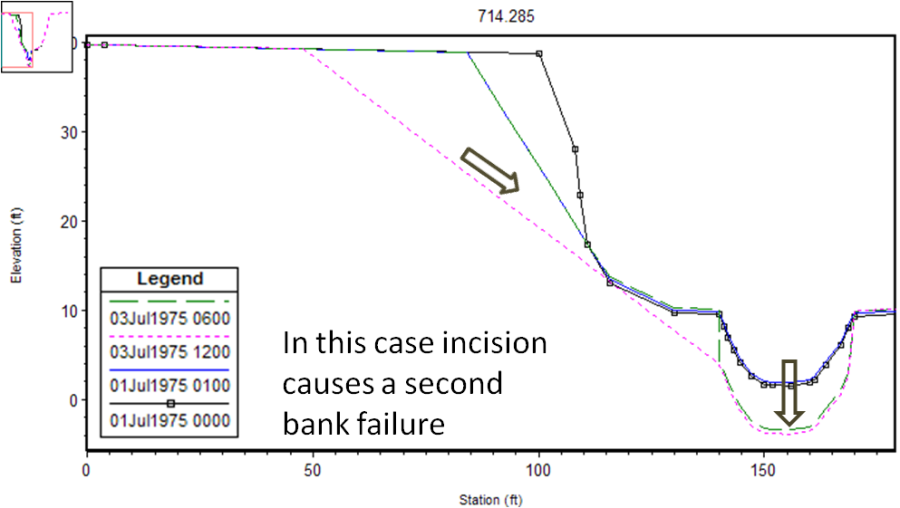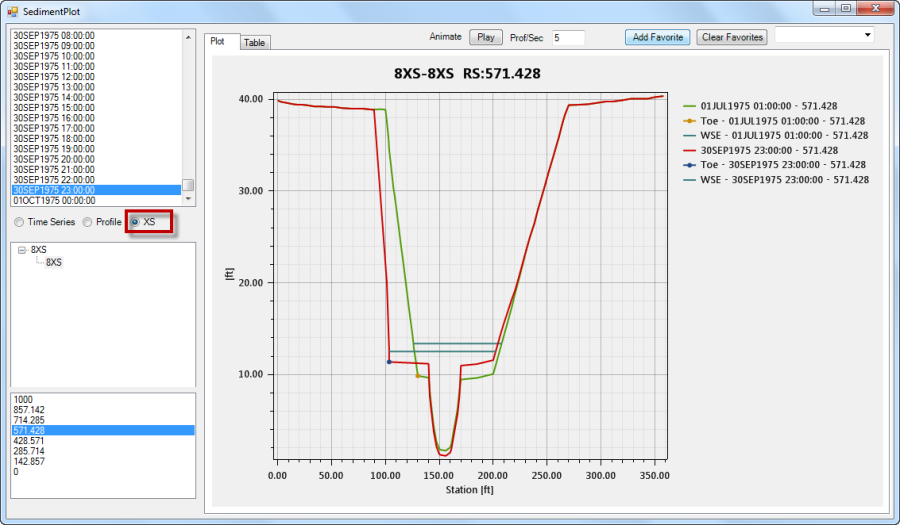Download PDF
Download page Output.
Output
HEC-RAS does not compute USDA-ARS BSTEM results by default. To request BSTEM output, from the Sediment Transport Analysis dialog box, from the Options menu, click Sediment Output Options. The Sediment Output Options dialog box will open, from the Output Level list select 6. Once that setup is done, from the HEC-RAS main window (figure in link), from the View menu, click Sediment Output. The Sediment Plot dialog box will open. In general, the new sediment output (which reads HDF5 output), is more complete and user friendly. However, the legacy sediment output viewers from HEC-RAS Versions 4.0 were retained because they have a few capabilities (e.g. plotting multiple variables and creating new geometry files) that the new viewers lack.
HEC-RAS computes several commonly used BSTEM results. The total mass eroded from a cross section in a computation increment (for both banks and both processes) is reported under BSTEM All. The total mass eroded from the banks can also be reported by grain class (e.g. BSTEM (7)) or by bank and process (top). Finally Factor of Safety (middle) for each bank and Groundwater Elevation (bottom) are available. All of these variables can be viewed as profiles (all the cross sections in a reach at a selected time step) or as time series, (all values over time at a selected cross section). The BSTEM output variables are defined in the table below.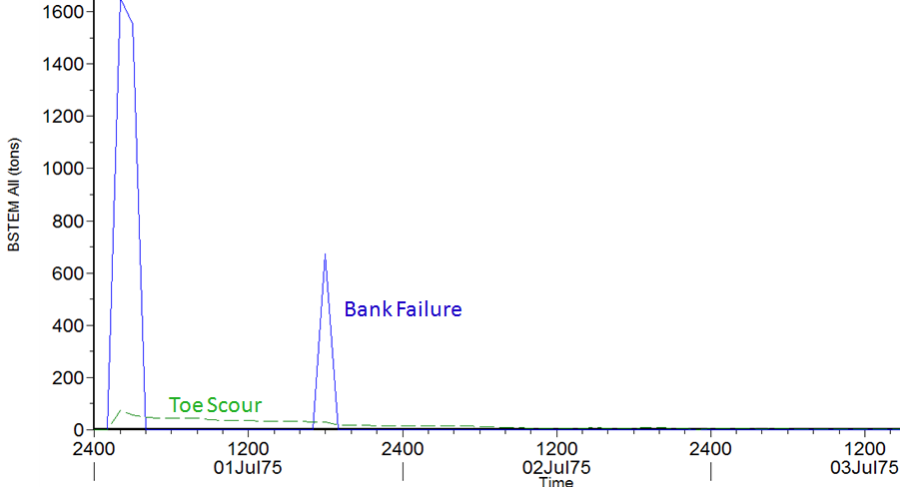
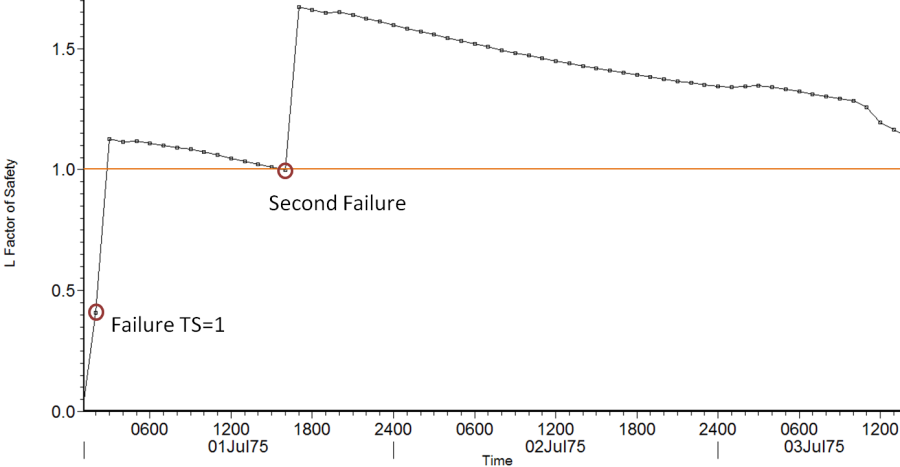
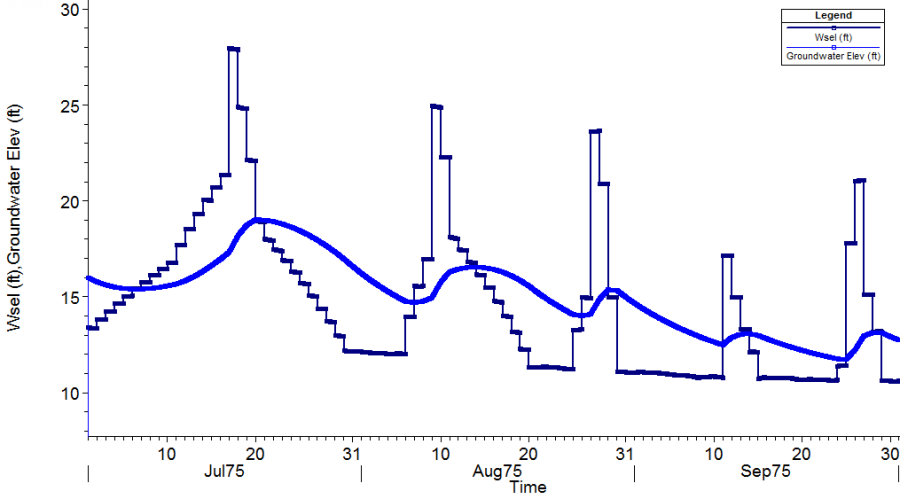
HEC-RAS modifies cross sections when the sediment model computes bed change or when BSTEM computes bank migration. Viewing cross section changes is often the most valuable output to understand and troubleshoot an HEC-RAS/BSTEM model. Cross section output files can be very large. HEC-RAS only outputs starting and final cross sections by default. The user can request more frequent cross section output from the Sediment Output Options dialog box (below, top). From the Sediment Transport Analysis dialog box, from the Options menu, click Sediment Output Options. The Sediment Output Options dialog box will open (below, top). From this dialog box users can request cross section data and specify the increment, the middle figure below provides an example. The Sediment Output Viewer from version 5.0 also plots the water surface elevation and the BSTEM toe associated with the cross section (below, bottom).
Table: BSTEM Output Variable Names and Descriptions in HEC-RAS
Variable | Descriptions |
BSTEM Mass (Vol) (tons or ft3) | Total sediment mass (or volume) –obilized - from both cross-sect–on banks - by toe scour and bank failure for each cross section for each computation increment. (Total and by Grain Class) |
BSTEM CumMass (Vol) (tons or ft3) | Cumulative mass (or volume) mobilized from the cross section for both banks and both BSTEM processes since the beginning of the simulation. (Total and by Grain Class) |
BSTEM Long CumMass (Vol) (tons or ft3) | The cumulative mass mobilized from the toe and banks since the beginning of the simulation, summed from upstream to downstream. (i.e. The value at the downstream cross section is the total eroded from the banks for the whole reach). |
L/R BSTEM Mass Failure (tons or ft3) | Mass removed from the left or right bank by bank failure processes for each computation increment. This variable is available for the selected computation increment and the total since the beginning of the simulation (Cum). |
L/R BSTEM Toe Mass (tons or ft3) | Mass removed from the left bank by toe scour for each computation increment. This variable is available for the selected computation increment and the total since the beginning of the simulation (Cum). |
L/R Factor of Safety (Decimal Fraction) | Minimum factor of safety computed in the left or right bank for each computation increment. |
BSTEM L/R Toe Station (ft or m) | The lateral station (i.e. the station-elevation point) of the toe. This tracks the lateral migration of the toe. |
BSTEM L/R Toe Elevation (ft or m) | The elevation of the station-elevation point identified as the toe. |
BSTEM L/R Top Station (ft or m) | The lateral station (i.e. the station-elevation point) of the point identified as the "top of bank". This tracks the lateral migration of a second point on the bank (besides the toe). |
BSTEM L/R Top Elevation (ft or m) | The elevation of the station-elevation point identified as the "top of bank". |
Movable Elv L/R: (ft) | The elevation of the movable bed limit. This is not a BSTEM specific variable, but can be helpful if the MBL is the BSTEM toe. |
Movable Sta L/R: | Tracks the lateral position of the movable bed limit. If the BSTEM toe is the same as the MBL, this result will quantify toe scour distance. |
Groundwater Elev (feet) | Ground water elevation computed in BSTEM, either static, user specified, or computed with the groundwater lag method. |
